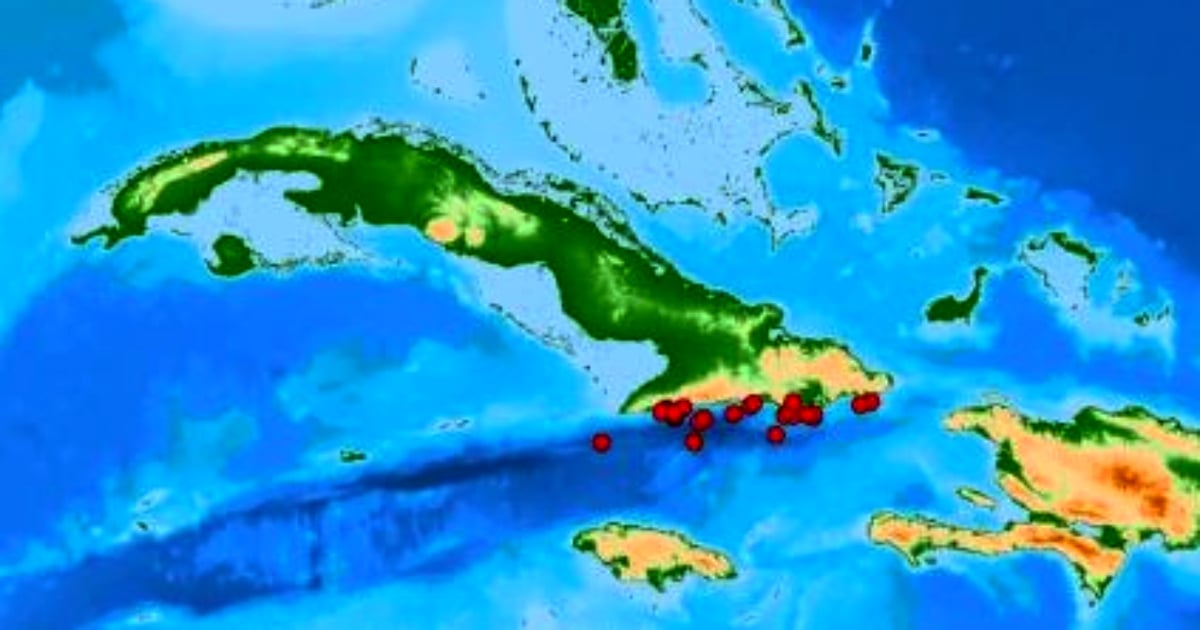On the night of February 2, 2025, at precisely 11:51 p.m., a 3.1 magnitude earthquake was detected in the city of Guantánamo, as reported by the National Center for Seismological Research (CENAIS). Despite its mild intensity, some residents noted the tremor. Following the protocols established by the National Seismological Service and Civil Defense, the event was not officially classified as perceptible, due to insufficient reports at the central station. These guidelines are based on technical criteria aimed at distinguishing between events that impact the population and those with low perceptibility.
Enrique Diego Arango Arias, head of the National Seismological Service of Cuba at CENAIS, stated on social media, "Last night, at 11:51 p.m., a 3.1 magnitude earthquake was felt by some individuals in Guantánamo city. Given the low detectability of this quake and the lack of reports to the central station, it was not officially reported as perceptible. This is in accordance with the protocols set with the National Civil Defense."
CENAIS emphasized that seismic activity monitoring in Cuba is ongoing, highlighting that the eastern region of the country experiences frequent low to medium intensity tremors. In its latest report, the institution detailed multiple aftershocks recorded in areas such as Santiago de Cuba, Pilón-Chivirico, and Cabo Cruz over the past month, though without major consequences. Authorities urged the public to stay informed through official channels and stressed the importance of reporting any perceptible seismic events to enhance alert and monitoring systems.
For further information on seismic activity in Cuba, individuals can consult the official CENAIS portal or follow updates from the National Civil Defense.
Continued Seismic Activity in Eastern Cuba
The eastern region of Cuba, particularly the provinces of Granma, Santiago de Cuba, and Guantánamo, has been notably active seismically in recent months. On December 23, 2024, a 6.1 magnitude quake shook the eastern part of the country, felt across several provinces and causing minor damage in some areas.
Previously, on November 10, 2024, two significant tremors of magnitudes 6.0 and 6.7 were recorded near the municipality of Pilón in Granma province. These events caused significant damage to infrastructure in the provinces of Las Tunas, Granma, Santiago de Cuba, and Guantánamo, with Pilón being among the most affected areas.
Since those events, CENAIS has reported thousands of aftershocks in the region. For instance, by November 12, 2024, 1,799 aftershocks had been recorded following the strong quakes on November 10.
More recently, on January 9, 2025, a 3.3 magnitude earthquake was reported southeast of Caimanera in Guantánamo province. Although no material damage or injuries were reported, the event caused alarm among some local residents.
CENAIS continues to monitor seismic activity in eastern Cuba and encourages the public to remain informed via official channels, as well as to report any perceptible seismic events to improve alert and response systems.
Seismic Activity in Cuba: Key Questions Answered
Why wasn't the Guantánamo earthquake officially classified as perceptible?
The earthquake was not classified as perceptible due to a lack of sufficient reports at the central station, in accordance with established protocols by the National Seismological Service and Civil Defense.
What regions in Cuba are most affected by seismic activity?
The eastern region of Cuba, including provinces such as Granma, Santiago de Cuba, and Guantánamo, is most affected by seismic activity, experiencing frequent low to medium intensity tremors.
How does CENAIS monitor seismic activity in Cuba?
CENAIS conducts continuous monitoring of seismic activity throughout Cuba, using technical criteria to differentiate between impactful events and those of low perceptibility, and encourages public reporting to enhance alert systems.
